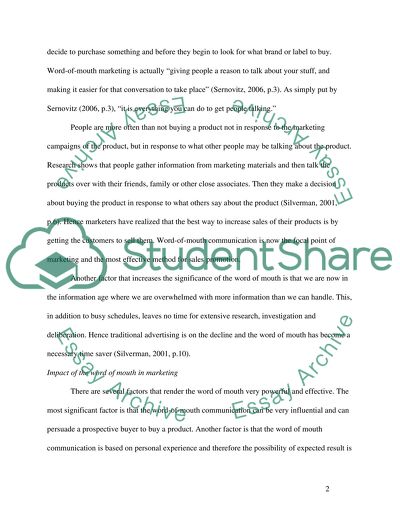Cite this document
(Word-of-Mouth to Marketing Coursework Example | Topics and Well Written Essays - 2500 words, n.d.)
Word-of-Mouth to Marketing Coursework Example | Topics and Well Written Essays - 2500 words. Retrieved from https://studentshare.org/marketing/1531530-word-of-mouth-to-marketing
Word-of-Mouth to Marketing Coursework Example | Topics and Well Written Essays - 2500 words. Retrieved from https://studentshare.org/marketing/1531530-word-of-mouth-to-marketing
(Word-of-Mouth to Marketing Coursework Example | Topics and Well Written Essays - 2500 Words)
Word-of-Mouth to Marketing Coursework Example | Topics and Well Written Essays - 2500 Words. https://studentshare.org/marketing/1531530-word-of-mouth-to-marketing.
Word-of-Mouth to Marketing Coursework Example | Topics and Well Written Essays - 2500 Words. https://studentshare.org/marketing/1531530-word-of-mouth-to-marketing.
“Word-of-Mouth to Marketing Coursework Example | Topics and Well Written Essays - 2500 Words”, n.d. https://studentshare.org/marketing/1531530-word-of-mouth-to-marketing.


